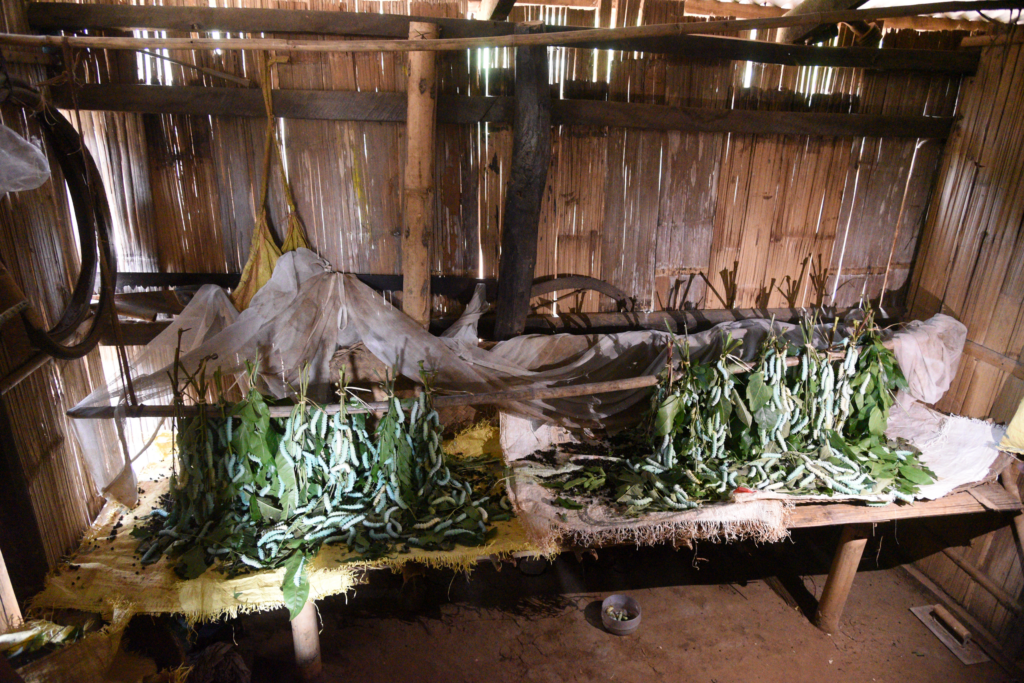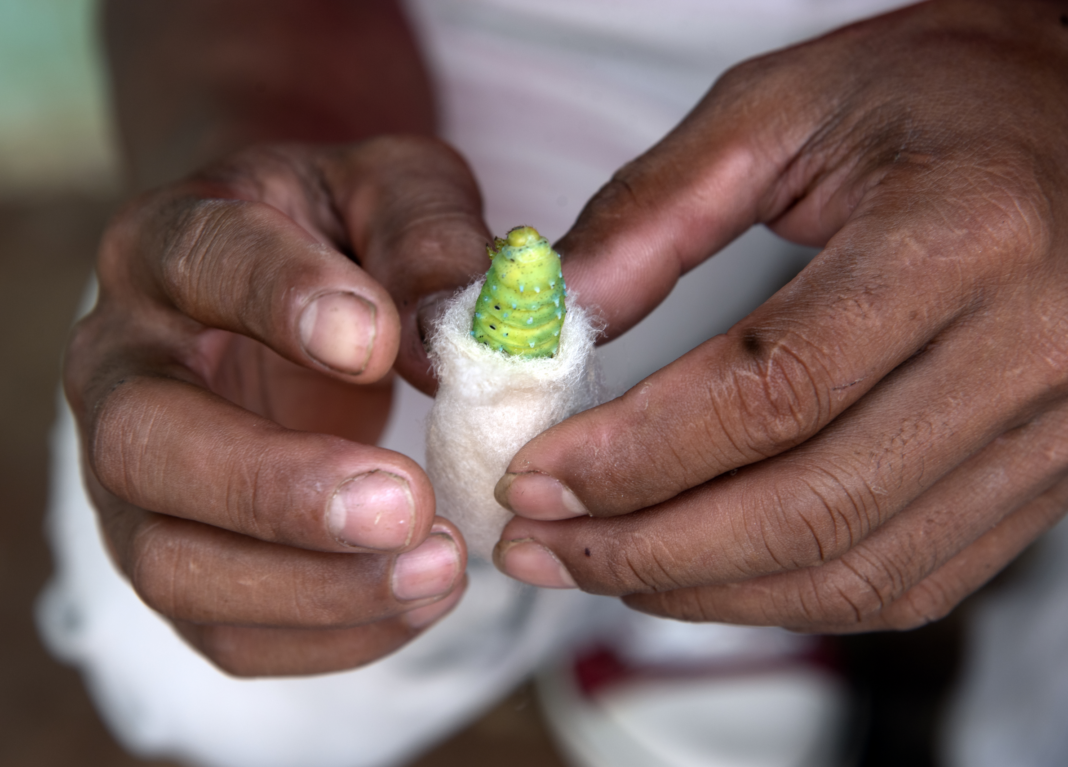A women-run cooperative in India uses ancient methods to produce luxurious, ethical silk.
Throughout the ages, silk products have been symbols of grace, luxury, and refinement. However, the standard method of raw silk production involves a cruel process. When silkworms begin pupating inside their cocoons, they are boiled or steamed alive to facilitate the extraction of the luxuriant fibers. The process is called stifling, which is undertaken to prevent the silkworm from cutting its way out of the cocoon, and thereby breaking the thread into shorter filaments. As sentient beings with a central nervous system, the silkworms experience excruciating pain before they die. Animal welfare organization PETA estimates that 3,000 silkworms are killed to produce one pound of silk, or 10,000 for a single piece of silk saree. India, the second largest silk manufacturing country in the world, depends on this production mechanism to sustain an industry that generates high revenue and a high employment potential.
This unique process of silk production has earned the sobriquet ‘peace silk,’ due to the ethical, non-violent means adopted to produce the organic silk.
– Sugato Mukherjee
But in the Umden-Diwon village cluster in the northeastern Indian state of Meghalaya, the ancient method of ericulture — the slower but cruelty-free, traditional practice of raising Eri silkworms — is drawing the attention of environmentalists from all over India. Along with San Kamphaeng in Thailand, Takeo in Cambodia and Van Phuc in Vietnam, Umden-Diwon is emerging as an important hub of ethical silk production.
“We call it Ryndia in our Khasi language,” said Thran Timung, referring to the eri silk production, weaving, and dyeing in Umden-Diwon by a women-run cooperative society. This unique process of silk production has earned the sobriquet ‘peace silk,’ due to the ethical, non-violent means adopted to produce the organic silk. In ericulture, Timung explained, once the eggs are hatched, the worms are constantly fed with tender castor leaves and watered until they mature over a closely monitored period of 50 days. The matured worms are then placed on cocooning mountings, where they spin fiber around themselves until they complete their life cycle and metamorphose into moths. The silk fibers of the empty cocoons are boiled to remove the protein gums left by the worms, then rinsed and flattened into rounds before they are dried in the sun. After that, female artisans use their traditional spindles to wind and spin the silk yarn and then weave handspun fabrics with this raw organic silk. More recently, the women have also begun using floor looms and flying shuttle looms.

Located 45 miles north of the state capital of Shillong, Umden is the epicenter of ericulture, which is spread across seventeen villages with about 800 families engaged in this sustainability-focused initiative. Timung showed me around Umden, where, she said, more than 70 percent of the indigenous Khasi community are involved in ericulture, a cultural legacy for them. Almost all the houses in the small hamlet — modestly constructed of mud and bamboo — have separate rooms for the silkworms, where the tiny green creatures feed on castor leaves from handwoven baskets. Silkworms are kept inside nets to protect them against such predators as flies, ants, and spiders, and the rooms are always kept well-lit and adequately ventilated to ensure a healthy environment.
Lyngdoh, 65, has been weaving on the same loom her family has been practicing ericulture for three generations. She showed us a few pieces of handwoven Eri silk shawls, stoles, and scarves. The undyed, off-white fabrics have a soft, light texture that feels luxurious. “These products have unique thermal properties,” she explained, “that keep you cool in summers and warm in winters.”

Traditionally, Eri silk yarn is dyed organically, using lac (a resinous secretion produced by a scale insect called lac. The substance is also used for varnish) for red, turmeric for yellow, and iron ore for black. But with an increased interest in these cruelty-free silk products, additional plant-based dyes are now being used to broaden the color selection, Timung said.
From a marginalized cottage industry, ericulture is moving into the mainstream. In February 2021, Umden-Diwon was officially declared as the state’s first Eri Silk Village and Eri silk was prominent at the prestigious 2022 Silk In Lyon – Festival de la Soie.
Muezart India, a Shillong-based startup, specializes in Eri silk products. Working closely with the silkworm farmers and artisans of Umden-Diwon, the online yarn store is now shipping the naturally dyed fabrics across the US and Europe through Amazon and Etsy Kevin Jyrwa, who heads the young team at Muezart said that it was their mission to put this heritage cottage industry of Meghalaya onto the global textile map.
Eri silk’s sturdiness and breathability, along with its inherent ability to blend with wool and cotton, make it a highly desirable material. And now, with a means of producing it that is ethical and cruelty-free, it’s also the world’s most sustainable silk fiber.




